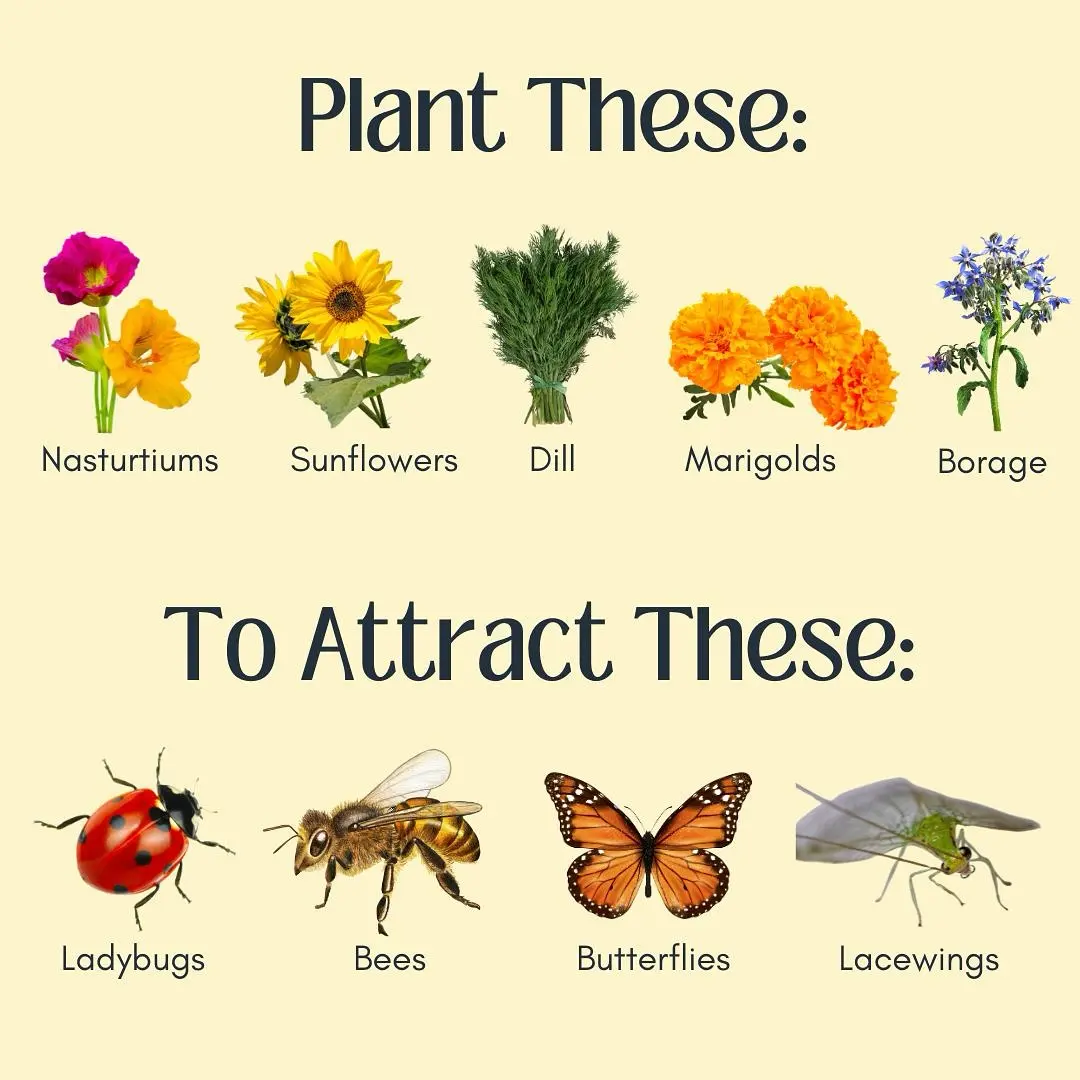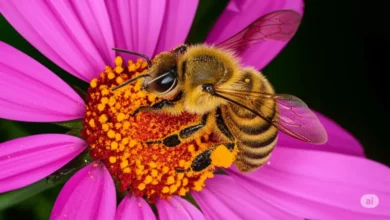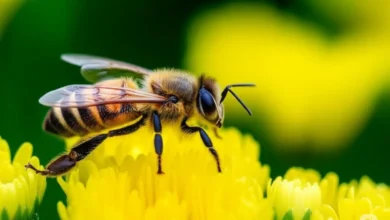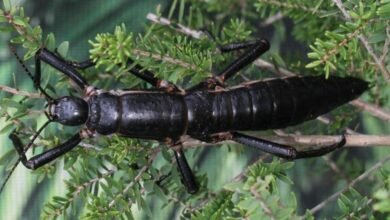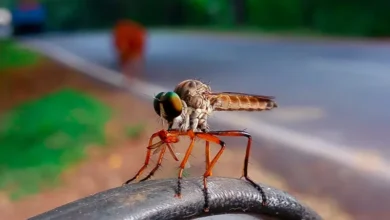How to Attract Beneficial Insects to Your Garden Naturally
Gardening is a delicate balance between nurturing plants and creating a vibrant ecosystem. Beneficial insects play a crucial role in this balance by naturally controlling pests and supporting plant pollination. In this guide, you’ll learn why attracting beneficial insects is essential, the types of helpful insects to welcome, and actionable tips to create a garden that invites these natural allies year-round.
Why Attracting Beneficial Insects Matters for Your Garden
Beneficial insects enhance your garden ecosystem in three major ways:
-
Pollination: Bees, butterflies, and hoverflies transfer pollen, boosting fruit and seed production in over 75% of flowering plants worldwide.
-
Predation: Predatory insects like ladybugs and lacewings consume harmful pests such as aphids and mites.
-
Parasitism: Parasitic wasps and flies lay eggs on or inside pests, reducing their populations by killing them before reproduction.
By attracting these insects, you reduce reliance on harmful pesticides, protect soil and water health, and cultivate a resilient, biodiverse garden.
Understanding Beneficial Insect Types You Want in Your Garden
1. Pollinators
-
Bees: Honeybees, bumblebees, mason bees, and leafcutter bees.
-
Butterflies and Moths: Drawn to nectar-rich flowers.
-
Hoverflies and Beetles: Feed on nectar and pollen, aiding pollination.
2. Predators
-
Lady Beetles (Ladybugs): Consume aphids, whiteflies, and mites.
-
Lacewings: Larvae feed voraciously on soft-bodied pests.
-
Ground Beetles: Hunt slugs, cutworms, and caterpillars at night.
-
Assassin, Damsel, Pirate Bugs and Spiders: Control a wide range of pests, especially thrips and leafhoppers.
3. Parasitoids
-
Parasitic Wasps: Lay eggs inside caterpillars and whiteflies.
-
Tachinid Flies: Target caterpillars and beetle larvae, feeding from within.
Essential Principles for Attracting Beneficial Insects to Your Garden
-
Diversity Is Crucial: Incorporate a variety of plants to provide continuous food and shelter.
-
Supply Nectar and Pollen: Adult beneficials need accessible nutrition.
-
Avoid Broad-Spectrum Pesticides: These harm both pests and their natural enemies.
-
Provide Habitat & Shelter: Use insect hotels, mulch, bare soil patches, and hedgerows.
-
Use Layered Planting: Combine groundcovers, shrubs, and taller plants for complex habitats.
Step-By-Step Strategies to Attract Beneficial Insects
1. Plant a Variety of Nectar-Rich Flowers
-
Choose Native Plants: They co-evolved to support local beneficial insect species.
-
Select Diverse Flower Shapes: Open umbels attract parasitic wasps; tubular flowers attract bees and butterflies.
-
Ensure Year-Round Blooms: Plan for early spring crocus to late-fall goldenrod.
-
Top Flower Families for Beneficials: Umbellifers (dill, fennel), Asters (sunflowers, daisies), Mints (thyme, oregano), Mustards (alyssum, radish flowers).
2. Create Habitat Features
-
Insect Hotels: Provide nesting spaces for solitary bees and wasps.
-
Mulch & Leaf Litter: Offer cover for ground beetles and other predators.
-
Bare Soil Patches: Essential for ground-nesting bees.
-
Hedgerows & Shrubs: Provide protection and overwintering sites.
3. Provide Water Sources
-
Use shallow dishes with stones, birdbaths with perches, or maintain damp soil patches for drinking and breeding.
4. Practice Companion Planting
-
Tomatoes + Dill: Attract parasitic wasps controlling hornworms.
-
Marigolds with Vegetables: Deter pests and draw pollinators.
-
Sweet Alyssum Borders: Highly attractive to hoverflies.
5. Minimize Chemical Use
-
Implement Integrated Pest Management (IPM)—monitor pests first, encourage beneficials, and use physical barriers.
-
Opt for targeted organic sprays like neem oil, applied in late evening to minimize harm.
6. Embrace Partial Wildness
-
Preserve natural areas with native grasses and wildflowers to provide refuges for beneficials.
Beneficial Insects and How to Attract Them
| Insect | Diet | Best Plants to Attract |
|---|---|---|
| Lady Beetles | Aphids, mites, whiteflies | Dill, fennel, cosmos, yarrow |
| Lacewings | Aphids, caterpillars | Dill, coriander, cosmos |
| Hoverflies | Aphids (larvae), nectar | Alyssum, marigolds, fennel, cosmos |
| Ground Beetles | Slugs, caterpillars | Mulch, groundcovers, rocks |
| Parasitic Wasps | Caterpillars, whiteflies | Dill, parsley, cilantro, wild carrot |
| Tachinid Flies | Caterpillars, beetle larvae | Dill, mint, thyme, compost piles |
| Bees | Nectar and pollen | Succession of flowering plants, bee hotels |
Designing a Beneficial-Insect-Friendly Garden
Garden Layout Tips
-
Plant nectar-rich flowers along borders and edges.
-
Interplant flowers among vegetables to break monocultures.
-
Create vertical layers—groundcovers, herbs, shrubs, and small trees.
Seasonal Planting Calendar
-
Early Spring: Crocus, willow, dandelion.
-
Summer: Zinnias, sunflowers, basil, mint.
-
Fall: Goldenrod, asters, sedum.
Long-Term Features
-
Establish native shrub hedgerows (elderberry, dogwood).
-
Install water features with gentle edges.
-
Dedicate 10–15% of garden area to insect-friendly plants.
Importance of Native Plants in Attracting Beneficial Insects
Native plants support local insect biodiversity far better than non-native or ornamental hybrids:
-
North America: Coneflowers, milkweed, black-eyed Susan.
-
Europe: Cornflower, knapweed, oxeye daisy.
-
Australia: Bottlebrush, grevillea, kangaroo paw.
Choosing native species ensures a sustainable food and habitat source for beneficial insects.
Common Mistakes to Avoid When Attracting Beneficial Insects
-
Overuse of pesticides—even organic ones—can harm helpful insect populations.
-
Relying solely on ornamental plants with little nectar or pollen.
-
Planting large monocultures that attract pests but not predators.
-
Completely removing weeds that provide valuable food.
-
Overly tidying the garden in fall, eliminating insect shelters.
Monitoring and Supporting Beneficial Insect Populations
-
Observe flower visitors—hoverflies, bees, and butterflies signal a healthy garden.
-
Inspect leaf undersides for ladybug larvae and lacewing eggs.
-
Use simple insect traps or observation logs to track insect diversity and pest control success.
-
Adjust planting and care routines based on observations.
Supporting Beneficial Insects Beyond Your Garden
Create a positive impact by:
-
Advocating for pollinator-friendly policies in your community.
-
Encouraging neighbors to reduce pesticide use and plant beneficial flowers.
-
Supporting local farms using integrated pest management and regenerative methods.
Real-Life Success Stories
-
Tomato-Dill Partnership: Dill attracted parasitic wasps that controlled hornworms, increasing tomato harvest.
-
Wildflower Farm Strips (UK): Wildflower borders boosted hoverfly and ladybug numbers, reducing aphid pests.
-
Bee Hotels (Canada): Installing bamboo-filled bee hotels tripled mason bee populations and improved fruit pollination.
Long-Term Benefits of Attracting Beneficial Insects
-
Reduce chemical pesticide use.
-
Increase garden yields and fruit quality.
-
Enhance biodiversity and garden resilience.
-
Experience a lively ecosystem buzzing with pollinators and natural pest controllers.
Conclusion: Fostering Harmony with Beneficial Insects
Attracting beneficial insects is a vital, sustainable strategy for healthy gardening. By designing a diverse, pesticide-free habitat with year-round floral resources, water, shelter, and native plants, you invite a natural pest control and pollination team that nurtures your garden’s productivity and ecological balance.
Remember, your role is to foster balance—not fight pests—to create a thriving, self-sustaining garden ecosystem filled with invaluable beneficial insects.

